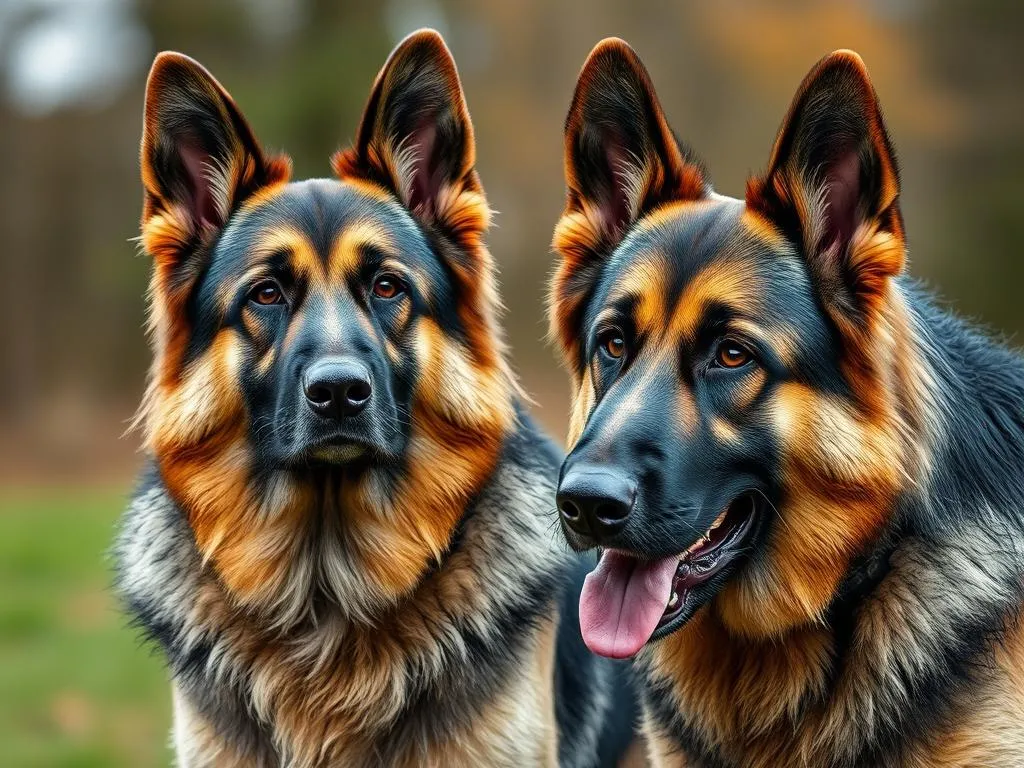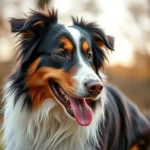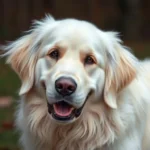
Understanding the differences and similarities between dog breeds is essential for potential dog owners, especially when contemplating breeds like the Shiloh Shepherd and the German Shepherd. Both breeds are popular and share some characteristics, but they also have distinct traits that set them apart. This comprehensive comparison will delve into various aspects of these two breeds, helping you make an informed decision.
Breed Overview
Shiloh Shepherd
The Shiloh Shepherd was developed in the United States in the late 20th century, with a goal of creating a breed that combined the intelligence and loyalty of the German Shepherd with a more robust and healthier physique. The breed emerged from the vision of Tina Barber, who sought to create a larger, gentler shepherd that would be suitable for families while maintaining the protective instincts and versatility of its German ancestor.
In terms of general characteristics, Shiloh Shepherds are large dogs, often weighing between 70 to 120 pounds, with a height ranging from 24 to 30 inches at the shoulder. Their appearance is striking, often featuring a long, flowing coat that can be either plush or slightly wavy. Their temperament is known for being loyal, gentle, and friendly, making them excellent family pets.
German Shepherd
The German Shepherd has a rich history dating back to the late 19th century in Germany. Initially bred for herding and working purposes, German Shepherds quickly gained fame for their intelligence and versatility, particularly in roles such as police and military work. The breed was standardized by Max von Stephanitz, who established a breeding program focused on traits like loyalty, courage, and trainability.
German Shepherds typically weigh between 50 to 90 pounds, with a shoulder height of 22 to 26 inches. They are well-known for their athletic build, erect ears, and distinctive coat colors, which range from sable to black and tan. Their temperament is characterized by intelligence, protectiveness, and a strong work ethic, making them suitable for various roles beyond companionship.
Physical Characteristics
Size and Weight Comparison
When comparing the Shiloh Shepherd to the German Shepherd, size is one of the most noticeable differences. Shiloh Shepherds are larger on average, typically standing 24 to 30 inches tall and weighing between 70 to 120 pounds. In contrast, German Shepherds are slightly smaller, standing 22 to 26 inches tall and weighing between 50 to 90 pounds.
Both breeds have similar growth patterns, with Shiloh Shepherds generally reaching their full size around 18 to 24 months, while German Shepherds may take a bit longer, reaching maturity by 2 to 3 years of age.
Coat and Coloration
The coat types of these breeds also differ. Shiloh Shepherds can have long-haired or short-haired coats, often with a luxurious, soft texture. Their colors vary but typically include shades of tan, black, and sable.
On the other hand, German Shepherds are most commonly seen in a short-haired variety, although long-haired options exist as well. Their coloration often includes combinations of black and tan, sable, and solid black. Grooming needs for both breeds can be moderate to high, with Shiloh Shepherds requiring regular brushing to manage their longer fur, while German Shepherds benefit from weekly grooming to reduce shedding.
Temperament and Behavior
Personality Traits
In terms of personality, Shiloh Shepherds are known for their loyalty and friendly demeanor. They are often described as gentle giants, making them excellent companions for families with children. Their social nature and desire to please make them easy to bond with.
Conversely, German Shepherds are recognized for their intelligence and protective instincts. They are often vigilant and responsive, making them excellent watchdogs. While they can be playful and affectionate, they may require more socialization to ensure they remain well-adjusted around strangers and unfamiliar pets.
Training and Socialization
Training requirements for both breeds are crucial, yet they differ slightly. Shiloh Shepherds tend to be eager to please, which can make training relatively straightforward. They thrive on positive reinforcement and, given their gentle nature, usually respond well to training methods that focus on reward rather than punishment.
German Shepherds, known for their high intelligence, require consistent training and socialization from a young age. They can excel in various training disciplines, from obedience to advanced working tasks, but they also need firm handling to channel their energy and intelligence effectively.
Compatibility with Families and Other Pets
Both breeds can integrate well into family dynamics, but their compatibility may vary. Shiloh Shepherds are particularly known for their affectionate nature toward children, making them ideal family pets. They generally get along well with other animals if properly socialized.
German Shepherds can also be great with families, but their protective instincts may require careful socialization, especially with children and other pets. Early training and exposure to different environments can help create a well-rounded German Shepherd that is comfortable in various situations.
Health and Lifespan
Common Health Issues
When comparing health concerns, Shiloh Shepherds are generally considered to have fewer genetic issues due to a focus on health in their breeding program. However, they are still prone to certain conditions such as hip dysplasia and obesity, which can impact their quality of life.
German Shepherds, while resilient, face a range of specific health issues including degenerative myelopathy and bloat. These conditions can significantly affect their overall health, so prospective owners should be aware of them and consult with veterinarians for preventative care.
Lifespan Comparison
The average lifespan of a Shiloh Shepherd tends to be around 10 to 14 years, while German Shepherds have a slightly shorter lifespan, averaging between 9 to 13 years. Factors influencing lifespan can include genetics, diet, health care, and living conditions, making it important for owners to prioritize these aspects for both breeds.
Exercise and Activity Needs
Daily Exercise Requirements
In terms of daily exercise, both breeds are active and require regular physical activity to stay healthy. Shiloh Shepherds typically need at least 60 minutes of exercise each day, which can include walks, playtime, and mental stimulation through training or interactive toys.
German Shepherds also require a similar level of activity, often thriving with about 60 to 90 minutes of exercise daily. They enjoy activities that challenge both their physical and mental abilities, such as obedience training, agility courses, and fetch games.
Ideal Living Conditions
The ideal living conditions for Shiloh Shepherds include homes with ample space, ideally with a backyard where they can run and play. They thrive in environments that allow for daily interaction and activity with their owners.
German Shepherds also benefit from active lifestyles and do best in homes where they can receive enough exercise and mental stimulation. They are adaptable but require a consistent routine to thrive, making them well-suited for active individuals or families.
Cost and Ownership Considerations
Initial Purchase Price
When considering the financial aspect of dog ownership, the initial purchase price can vary significantly. On average, a Shiloh Shepherd can cost between $1,500 to $3,000, reflecting their specific breeding programs and health focus.
German Shepherds, while also a popular breed, are generally less expensive, with prices ranging from $500 to $3,000 depending on the breeder, lineage, and location.
Ongoing Costs
Ongoing costs for both breeds should also be evaluated. Shiloh Shepherds may incur higher feeding costs due to their larger size, along with grooming expenses for their longer coats. Veterinary care, training classes, and quality food can add up over time.
German Shepherds have similar ongoing costs, but their grooming needs may be slightly lower, especially if they have a short coat. However, their health issues may lead to higher veterinary expenses in the long run, making it essential for owners to plan accordingly.
Time Commitment and Lifestyle Fit
The time commitment for both breeds is significant. Shiloh Shepherds require regular training and socialization, which may involve several hours each week. They thrive on companionship and may not do well if left alone for extended periods.
German Shepherds also demand considerable time for training, exercise, and companionship. Their intelligence requires mental stimulation, so owners must engage them through various activities, ensuring they remain active and fulfilled.
Conclusion
In summary, both the Shiloh Shepherd and the German Shepherd offer unique traits and characteristics that can appeal to different types of dog owners. While Shiloh Shepherds are often larger, gentler, and more family-oriented, German Shepherds bring intelligence, loyalty, and protective instincts to the table.
Ultimately, the decision on which breed is right for you will depend on your lifestyle, preferences, and ability to meet the needs of the dog. Both breeds can provide companionship, loyalty, and joy, making them wonderful additions to any family.
FAQs
-
Which breed is better for first-time dog owners?
Generally, Shiloh Shepherds may be more suited for first-time dog owners due to their gentle nature and eagerness to please, while German Shepherds may require more experience in training and socialization. -
How do they differ in terms of intelligence?
Both breeds are intelligent; however, German Shepherds are often regarded as one of the most intelligent dog breeds, excelling in training and obedience tasks. -
Can they be trained for similar jobs or roles?
Yes, both breeds can be trained for various roles, including service and working dogs. However, German Shepherds have a longer history in these roles and may be more commonly found in police and military work.









